Like all learners, students on the autism spectrum have a wide range of strengths, challenges, and support needs. To help you promote the academic and behavioral success of autistic learners, we’ve rounded up six of our new and bestselling resources for educators and other professionals!
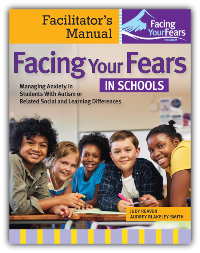
Facing Your Fears in Schools
by Judy Reaven, Ph.D., Audrey Blakeley-Smith, Ph.D.
Read the author Q&A: Facing Your Fears in Schools
“I’m thrilled to see an evidence-based treatment for anxious autistic kids that can be delivered by school personnel. And it’s short enough to fit into school’s busy schedules! This program works and it is easy to use.”—Laura Anthony, Ph.D., Psychologist and Professor, University of Colorado, co-author of Unstuck and On Target
What it is: Facing Your Fears is a highly effective new cognitive-behavioral therapy (CBT) program that helps students with autism or other social/learning needs manage their anxieties. For use with students ages 8–14, this evidence-based program empowers autistic learners to navigate a variety of potential anxiety triggers they might encounter during a typical school day, paving the way for positive outcomes both academically and in life.
Why you need it:
- Judged effective by clinic-based and multi-site trials, all of which indicated that participating youth exhibited significant decreases in their levels of anxiety.
- A flexible fit for any classroom schedule—can be completed in 12 lessons (40 minutes) or 24 lessons (20 minutes).
- Designed for use by a range of interdisciplinary school providers, including special educators, SLPs, occupational or physical therapists, school psychologists, social workers, and counselors.
- Builds strong connections with families via a 60-minute caregiver meeting at the start of the program, weekly session summary reports, and program materials for at-home support.
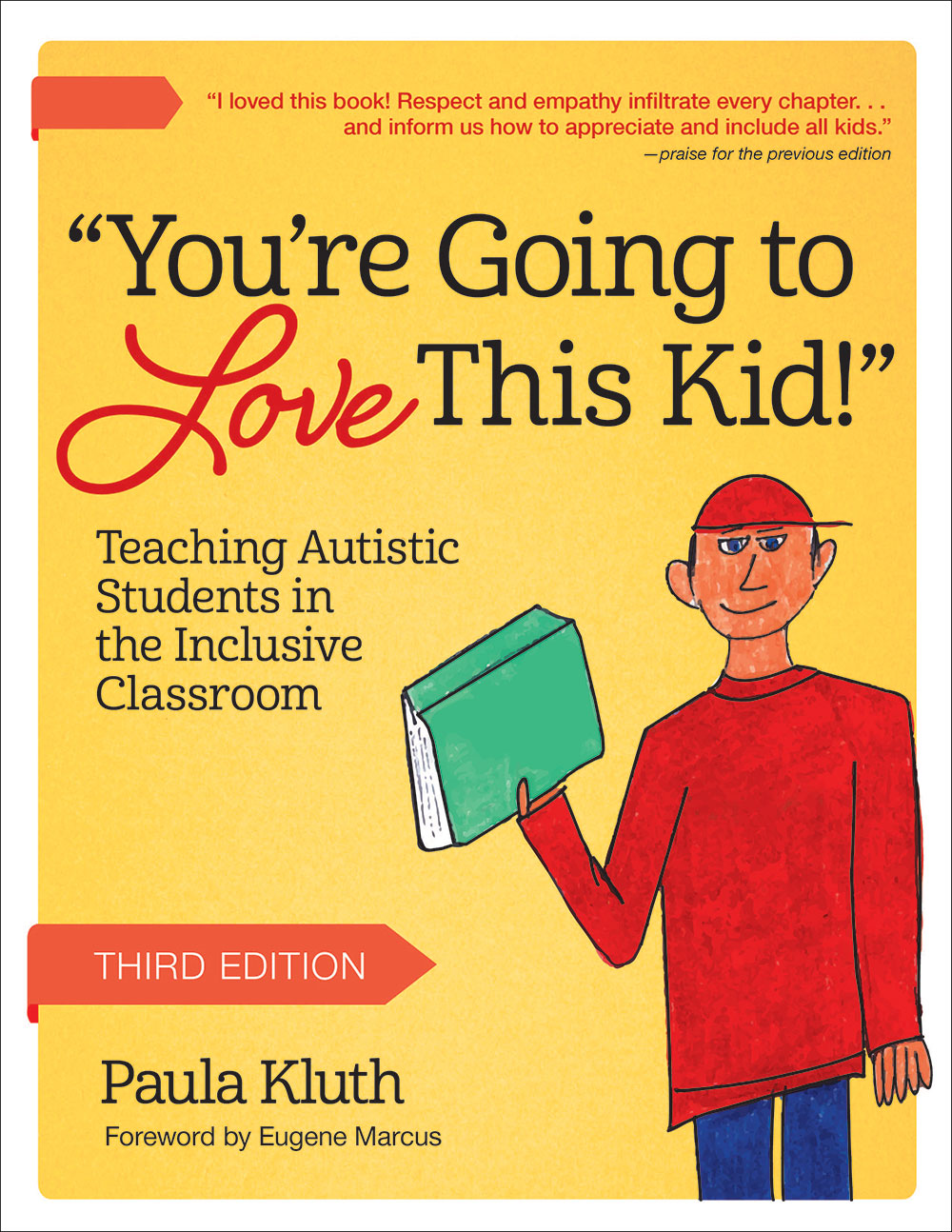
You’re Going to Love This Kid!, Third Edition
by Paula Kluth, Ph.D.
“If books in the field of education were eligible for the Pulitzer Prize, this one would be a winner…Reading it will transform your thinking as an educator or parent as well as change the lives of your students.”
–Cheryl Jorgensen, Ph.D., Inclusive Education Consultant and Author
What it is: Now in its third edition, this bestselling classic has been a mainstay on the inclusion bookshelves of K–12 educators for more than 20 years. Writing in a down-to-earth style, celebrated inclusion expert Paula Kluth lays out a comprehensive, strengths-based roadmap for making school safe, accessible, and academically enriching for learners on the autism spectrum. (Learn more about Paula Kluth and her essential Brookes resources on our author spotlight page!)
Why you need it:
- Fully updated chapters informed by the latest research and recommended practices
- Firsthand insights from autistic people and their families incorporated throughout
- Great new features like learning objectives, bulleted organizers, and all-new discussion questions
- Expert advice on making classrooms supportive for those with sensory needs
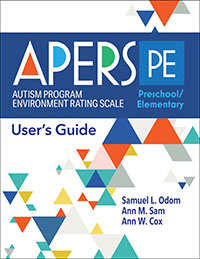
Autism Program Environment Rating Scale - Preschool/Elementary
by Samuel L. Odom, Ph.D., Ann M. Sam, Ph.D., & Ann W. Cox, Ph.D.
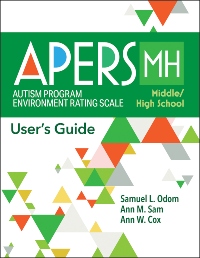
Autism Program Environment Rating Scale - Middle/High School
by Samuel L. Odom, Ph.D., Ann M. Sam, Ph.D., & Ann W. Cox, Ph.D.
Read the blog post: New Tool Spotlight: The Autism Program Environment Rating Scale
What it is: The Autism Program Environment Rating Scale for Preschool/Elementary (APERS-PE) and Middle/High School (APERS-MH) are the first tools designed to accurately assess the quality of programs that serve autistic learners. These in-depth assessments draw on observations, interviews, and reviews of student records to rate programs in 10 key domains, providing decision-makers with the data they need to understand program strengths and needs.
Why you need it:
- Valid and reliable—developed by top autism researchers
- Measures program areas with the most influence on the learning and behavior of autistic students
- Boosts professional growth by identifying areas where teachers might need more training and support
- Appropriate for all classrooms, including inclusive classrooms, self-contained classrooms for autistic students, and programs that are a mix of both
Order APERS-PE >>
Order APERS-MH >>
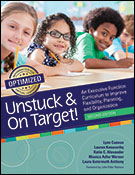
Unstuck and On Target! Ages 8-11
by Lynn Cannon, M.Ed., Lauren Kenworthy, Ph.D., Katie C. Alexander, M.S., OTR/L, Monica Adler Werner, M.A., & Laura Gutermuth Anthony, Ph.D.
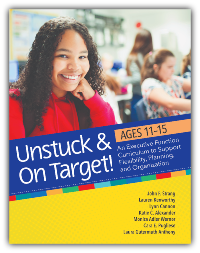
Unstuck and On Target! Ages 11-15
by Lynn Cannon, M.Ed., Lauren Kenworthy, Ph.D., Katie C. Alexander, M.S., OTR/L, Monica Adler Werner, M.A., & Laura Gutermuth Anthony, Ph.D.
“Does a remarkable job of translating complex ideas and abstract terminology into concepts and language that make sense to children…accessible and appealing to children and easy for teachers to implement.”–Peg Dawson, Ed.D., NCSP, Psychologist, Center for Learning and Attention Disorders; co-author of Smart but Scattered
What it is: These popular executive function curricula explicitly teach key skills—including flexibility, persistence, time management, and organization—that autistic students often need additional support to master. Both the Unstuck curriculum for students ages 8-11 and the recently released Unstuck and On Target! Ages 11-15 feature engaging lessons that positively reinforce skills directly linked to future achievement. (Stay tuned for the new Unstuck for ages 14-22!)
Why you need it:
- Targets skills that students need to succeed in school and life: flexibility, planning, problem-solving, collaboration, time management, task initiation, task persistence, and more.
- Engages students with a fun mix of games, role playing scenarios, and spirited class discussions.
- Easy to use in any classroom—includes clear instructions, comprehensive materials lists, and teacher implementation tips.
- Supports the executive function development of all learners, not just students on the autism spectrum.
Order Unstuck Ages 8-11 >>
Order Unstuck Ages 11-15 >>
STAY TUNED for the new Unstuck Ages 14-22, coming in Spring 2025! Get 25 new lessons to help students develop the skills they need to navigate high school and enjoy a successful, self-determined adult life.
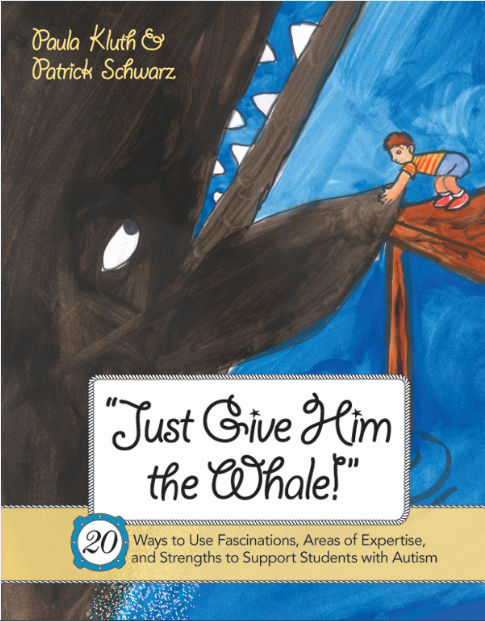
Just Give Him the Whale!
by Paula Kluth, Ph.D., & Patrick Schwarz, Ph.D.
"This book is for any teacher who wants to be remembered fondly by her students as the one who 'got it', who built meaning and motivation into learning. I wish this book had been on my shelf my first year of teaching!” –Catriona Johnson, Chair, Autism Society of America Government Relations Committee; parent of a child with autism
What it is: This is the ideal guidebook for educators looking to harness the special interests of autistic students to lessen anxiety, boost positive behavior, and lay the groundwork for academic achievement. Combining years of real-world experience with fresh, thoughtful perspectives from people with ASD, top autism experts Paula Kluth and Patrick Schwarz reframe the fascinations of autistic students as powerful motivational tools that can help them feel safe, connected, and ready to learn.
Why you need it:
- Concise, highly-practical, and proficiency-oriented, Just Give Him the Whale! is a short book that has had a big impact on how educators view and support learners on the autism spectrum.
- Use students’ special interests to expand key skills with the practical, research-based tips and suggestions included at the end of each chapter.
- Enhances academic achievement by using students’ areas of expertise to help them master standards-based content, expand communication skills, minimize anxiety, nurture social connections, and more!
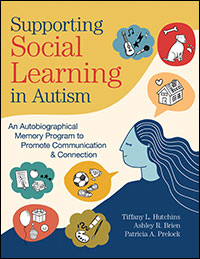
Supporting Social Learning in Autism
by Tiffany L. Hutchins, Ph.D., Ashley R. Brien, Ph.D., CCC-SLP, & Patricia A. Prelock, Ph.D., CCC-SLP, BCS-CL
Get a free activity from this book: Memory Box Scavenger Hunt
What it is: Research has shown that one of the most important aspects of healthy social learning and communication is autobiographical memory (ABM), an individual’s long-term memory of themselves and their past experiences. This groundbreaking book provides step-by-step guidance on supporting ABM in learners on the autism spectrum, giving them the tools to tap into their lived experience as they develop social skills and cultivate mutually beneficial peer relationships. (For a more comprehensive look at why ABM and this book are both so important, take a look at this article.)
Why you need it:
- Authentic and client-centered, the ABM approach was developed by autism experts to respect a child’s interests and cognitive habits, not encourage a specific set of behaviors.
- Backed by extensive research, this innovative program translates evidence-based findings into practical intervention tips and activities.
- Appropriate for all intervention settings, the ABM program can be adapted to home, school, or community.
- Fosters positive academic and social outcomes by strengthening memory retrieval and discourse strategies essential to success in school and beyond.
Recommended Reading
Inclusive educators: Add the resources in this post to your professional toolbox, and help students with autism reach their full potential! Read these Brookes blog posts for additional practical tips and guidance:
- Paula Kluth Q&A: Inside the NEW Edition of You’re Going to Love This Kid!
- Promoting Peer Engagement for Young Children on the Autism Spectrum: 7 Activity Ideas
- 15 Tips on Supporting Emotional Regulation for Young Children with (and Without!) Autism
- 13 Ways to Support the Behavior and Learning of Students on the Autism Spectrum
- Supporting Autistic Learners: The Role of Memory in Social Learning and Social Communication
- ACTIVITY: Supporting Autistic Learners with a Memory Box Scavenger Hunt
- “You Learn By Doing”: An Inclusion Q&A with Paula Kluth
- 10 Ways to Teach and Include All Students This Year
Explore Our Resource Library
Find dozens of autism-related resources in our free library on the Brookes site! Here, you can access:
- Video clips of top expert Paula Kluth offering practical tips and strategies
- Excerpts from our latest books on working with autistic learners
- Tip sheets on topics like supporting regulation, promoting inclusive schooling, and evaluating intervention approaches
- Sample lessons and teaching plans
Explore the resource library today to find supplementary resources for supporting your students!
Stay up to date on the latest posts, news, strategies, and more!
Sign up for one of our FREE newslettersMore posts like this
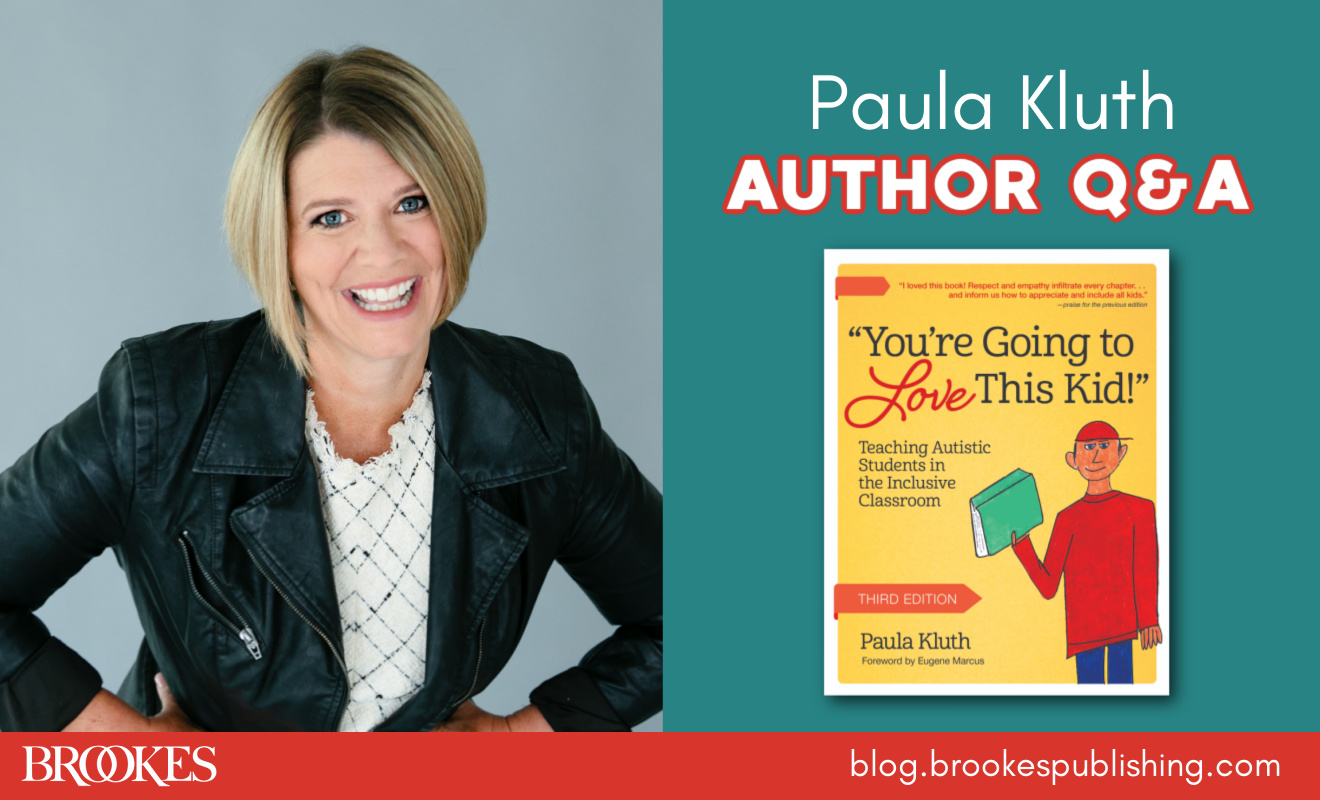
Paula Kluth Q&A: Inside the NEW Edition of You’re Going to Love This Kid!
June 20, 2023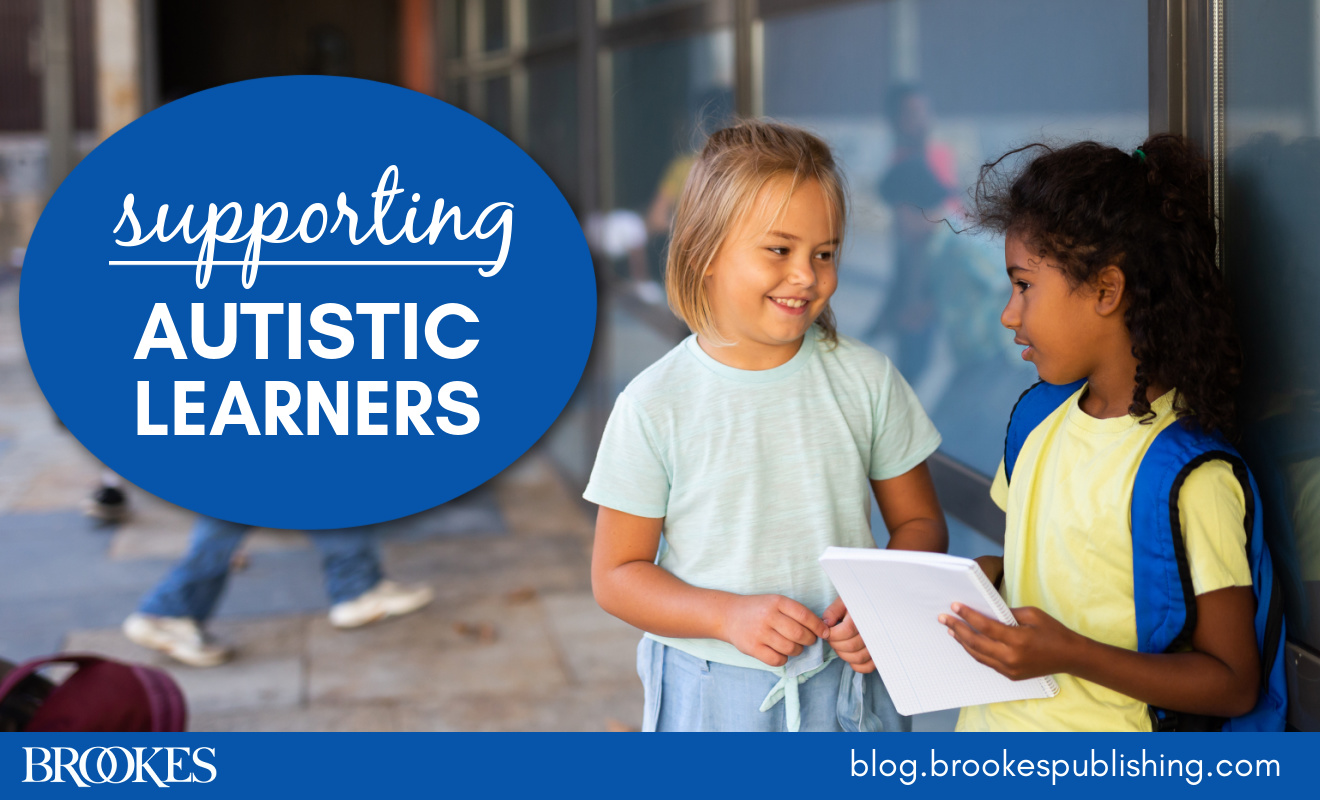
Supporting Autistic Learners: The Role of Memory in Social Learning and Social Communication
May 2, 2023

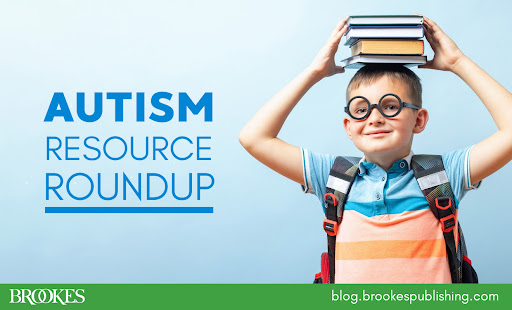
Write a Comment
Your email address will not be published. Required fields are marked *
Post a Comment